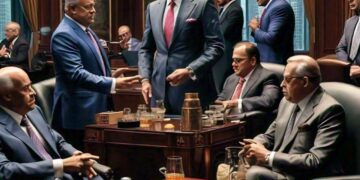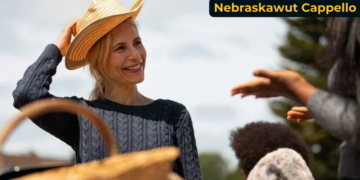Introduction to Carnaval do Rio de Janeiro
Carnaval do Rio de Janeiro often referred to simply as “Carnaval” is one of the most famous and vibrant festivals in the world. Held annually in the Brazilian city of Rio de Janeiro, this event is a spectacular display of music, dance and color attracting millions of visitors from around the globe. The festival’s roots trace back to ancient European traditions which were brought to Brazil during the colonial era and subsequently transformed into the unique celebration it is today.
Historical Background
Origins
The origins of Carnaval can be traced back to the European traditions of the 17th and 18th centuries, particularly the Portuguese celebration of “Entrudo” where people would engage in playful fights with water, mud and food. As these traditions mingled with African and Indigenous Brazilian cultures a distinct Brazilian Carnaval emerged.
Evolution Over Time
Over the centuries Carnaval has evolved significantly. The introduction of samba music and dance in the early 20th century marked a turning point, making these elements integral to the celebration. The establishment of the first samba schools in the 1920s further solidified the festival’s modern form, emphasizing organized parades and elaborate performances.
Key Elements of the Festival
Samba Parades
The samba parades are the heart of Carnaval do Rio de Janeiro. Held at the Sambadrome a purpose-built parade area, these events feature samba schools competing against each other. Each school presents a themed performance with elaborate costumes, massive floats and choreographed dances. The preparation for these parades takes months with each school striving to outdo the others in creativity and execution.
Street Parties (Blocos)
In addition to the samba parades, street parties known as “blocos” are a major part of Carnaval. These informal gatherings occur throughout the city, each with its own unique theme and style of music. Blocos vary in size from small neighborhood events to massive gatherings attracting tens of thousands of revelers.
Costumes and Masks
Costumes and masks play a crucial role in the visual spectacle of Carnaval. Participants don a wide range of outfits, from traditional to avant-garde often reflecting the themes of their samba school or bloco. The use of masks and elaborate face paint adds to the festive atmosphere, allowing people to adopt different personas during the celebrations.
Cultural Significance
Symbol of Brazilian Identity
Carnaval is more than just a festival; it is a symbol of Brazilian identity and cultural heritage. It showcases the country’s diversity, creativity and passion for music and dance. The event provides a platform for artistic expression and social commentary often addressing political and social issues through performance themes.
Economic Impact
The economic impact of Carnaval is significant, generating substantial revenue for the city of Rio de Janeiro. The influx of tourists boosts local businesses, from hotels and restaurants to vendors and artisans. The festival also creates numerous temporary jobs contributing to the local economy.
Preparations for Carnaval
Samba Schools
Preparations for Carnaval begin many months in advance, particularly for the samba schools. These schools, which are more akin to community organizations spend the entire year planning and rehearsing their performances. They select themes, design costumes and floats, compose music and choreograph dances to ensure their presentation is flawless.
Community Involvement
Community involvement is a key aspect of the preparations. Residents of Rio de Janeiro regardless of age or background often participate in the activities leading up to Carnaval. This involvement fosters a sense of unity and pride as communities come together to celebrate their cultural heritage.
The Experience of Attending Carnaval
Spectator Experience
For spectators, attending Carnaval is an unforgettable experience. The energy and excitement of the parades, combined with the stunning visuals and rhythmic music, create an immersive atmosphere. The Sambadrome offers various seating options from general admission to luxury boxes, accommodating a wide range of preferences and budgets.
Participating in Blocos
Participating in blocos provides a more informal and spontaneous experience. These street parties allow visitors to engage directly with the local culture, dancing alongside residents and enjoying the vibrant street performances. Each bloco has its own unique character, offering a diverse array of experiences within the broader festival.
Impact on Global Culture
International Influence
Carnaval do Rio de Janeiro has had a significant impact on global culture, influencing festivals and celebrations around the world. Its vibrant spirit and unique traditions have inspired similar events in other countries, spreading the essence of Brazilian Carnaval far beyond its borders.
Media and Tourism
The extensive media coverage of Carnaval helps to promote Rio de Janeiro as a major tourist destination. Documentaries news reports and social media posts highlight the festival’s grandeur attracting tourists who seek to experience the magic of Carnaval firsthand.
Conclusion
Carnaval do Rio de Janeiro is a cultural extravaganza that captivates millions with its vibrant displays of music, dance and artistry. Rooted in centuries-old traditions and continually evolving, it stands as a testament to the creativity and spirit of the Brazilian people. Whether through the spectacular samba parades or the lively street parties, Carnaval offers an unparalleled experience that celebrates the rich cultural heritage of Brazil.
FAQs about Carnaval do Rio de Janeiro
- What is Carnaval do Rio de Janeiro?
- Carnaval do Rio de Janeiro is an annual festival held in Rio de Janeiro, Brazil known for its samba parades, street parties and vibrant costumes.
- When is Carnaval celebrated?
- Carnaval is typically celebrated in February or March, starting on the Friday before Ash Wednesday and lasting until the following Tuesday.
- What are samba schools?
- Samba schools are community organizations that prepare for the samba parades, creating themed performances with elaborate costumes, float and dances.
- What are blocos?
- Blocos are informal street parties held throughout Rio de Janeiro during Carnaval each with its own theme and style of music.
- How do people prepare for Carnaval?
- Preparations involve months of planning by samba schools and communities including designing costumes, building floats and rehearsing performances.
- What is the Sambadrome?
- The Sambadrome is a purpose-built parade area in Rio de Janeiro where the main samba parades take place during Carnaval.
- What is the economic impact of Carnaval?
- Carnaval generates significant revenue for Rio de Janeiro through tourism, creating temporary jobs and boosting local businesses.
- How can visitors participate in Carnaval?
- Visitors can attend the samba parades at the Sambadrome or join the street parties (blocos) throughout the city.
- What is the cultural significance of Carnaval?
- Carnaval is a symbol of Brazilian identity, showcasing the country’s diversity, creativity and passion for music and dance.
- Has Carnaval influenced other cultures?
- Yes, Carnaval do Rio de Janeiro has inspired similar festivals and celebrations worldwide, spreading the spirit of Brazilian Carnaval globally.



































